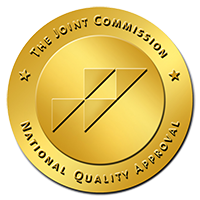Perceptions of pain level differs among individuals

Box Butte General Hospital’s Functional Pain Scale pamphlet.
At Box Butte General Hospital, staff does everything to help with pain to ensure it is always well controlled. For that to happen effectively, good communication between a patient and his or her medical provider and nursing staff is extremely important. It’s surprising how hard communicating pain levels can be at times. Pain is pain, right? However, it differs between one patient and the next. That’s why BBGH developed its Functional Pain Scale; one used by medical providers like BBGH’s Director of Anesthesia and Pain Management Dr. Chuck Frisch, CRNA, DNP, FAAPM.
Dr. Frisch has one guiding principal: No patient should have to endure any kind of pain above a certain level. “By level, I mean our one to ten pain scale,” he said. “Say you’re a patient. When I explain the pain scale to you I will often compare Level 3 pain as ‘you know you stubbed your toe.’ It’s tolerable, but you feel it. A Level 6 amount of pain is comparable to a knife cut, where the pain is strong enough to start to interfere with your thinking and be very distracting. Now for a Level 3 amount of pain, I’m not going to do much to alieve it since it’s just a ‘stubbed toe’ type of pain. But anything above that level I’m going to try to mitigate by using drugs or other means. Pain medications should reduce your pain to a tolerable level, but may not take the pain away completely. I want the patient’s pain to at least be tolerable to the point where the patient can ignore it …. again, just like you do with a stubbed toe. I also tell the patient that it might take some time to find the right medication or combination of medications to manage his or her pain. But we WILL get it under control, to the point where it allows for healing, improvement of ability to perform daily functions and a return to your normal activities.“
The functional pain scale ranges from zero to ten, with each level described in this way: 0 = pain free; 1 = very mild; 2 = uncomfortable; 3 = tolerable; 4 = distressing; 5 = very distressing; 6 = intense; 7 = utterly horrible; 8 = very intense; 9 = excruciating, unbearable; and 10 = unimaginable, unspeakable.
When you throw in how people differ in the amount of pain they can tolerate, that important tool of good communication gets more muddled. “For example, I had one patient who kept insisting his pain level was a 10, and then fall asleep, only to wake up again and say it was a 10,” Dr. Frisch said. “Now, falling asleep just doesn’t happen when you’re having pain that’s unimaginable and unspeakable. It just doesn’t. But that’s a good example of someone who had a very low threshold for pain. For other patients, it’s the opposite. For example, I have a pretty high tolerance to pain. I had suffered an injury awhile back that was around a Level 6 type of pain for me. But I was able to get it to a tolerable level by just taking Tylenol. ”
The more a nurse or provider knows about a patient’s pain, the better. Here’s what a patient needs to communicate to his or her health care team about their pain. Remember that pain is easier to manage when caught and treated early, before it gets out of control or becomes incapacitating. “The patient should never hesitate to call a nurse or provider if pain starts increasing above the tolerable level,” Dr. Frisch said. “So tell your health care team member when you have pain, even if they don’t ask. Tell them where and when it hurts, if it stops you from sleeping, dressing, walking or climbing stairs. The more they know about your pain the better they can treat it. Each patient is given our Functional Pain Scale pamphlet. It has some very good descriptor words they can use to help communicate the type of pain they’re having.” Words such as aching, bloating, burning, cramping, comes and goes, constant, cutting, dull, numbing, pressing, pressure, pulling, radiating, searing, sharp, shooting, soreness, stabbing, throbbing, tightness. “Those types of descriptors really help us understand what kind of pain we need to address,” Dr. Frisch said. “That gives us the tools we need to develop a reasonable pain treatment for our patients.”
He concluded by pointing out that while medication for treating pain may be the most common method used, other alternatives can be effective as well. “I’ve used hypnosis a few times, and it works well,” he said. “Others methods that can be effective are position changes, applying heat or ice, having a dark and quiet room, massage, music, meditating, deep breaths, even watching TV or working on puzzles.”
Box Butte General Hospital is an equal opportunity provider and employer.


